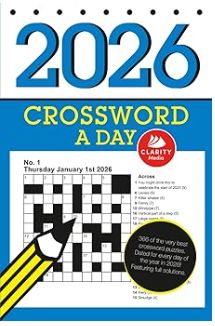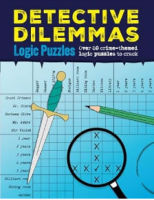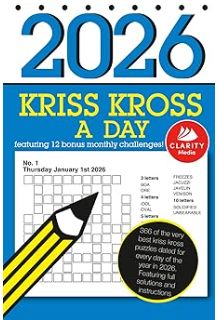Hints and Tips on Solving Cryptogram Puzzles
What is a cryptogram puzzle, how does it work and how do you go about solving it? Those are the topics we will cover in this article.If you prefer to watch than read, our most popular video on YouTube tackles how to solve cryptogram puzzles: you might like to watch the video either before or after reading the article below to see visually what the puzzle is and how it works. If you find the video useful, please do subscribe to our channel: it's free and we really appreciate support of the channel!
What is a cryptogram puzzle?
The name 'cryptogram' is typically used to refer to a puzzle in which each letter of the alphabet is swapped randomly with another letter (or possibly itself): that is the meaning of the word we are referring to throughout this discussion of a cryptogram puzzle. This means that when you look at the code you know the number of letters used straightaway, and each time a letter is encoded, it appears the same way. Thus the word FOOD could appear in the code as TPPE. This tells us something straightaway - we are looking for a word that contains the same letter twice in the middle. Cryptograms typically do also include punctuation, so something like I'M HERE would typically still appear with the space and apostrophe in the code, e.g. F'J LOPO.
Cryptogram Solving Techniques and Hints
There are various tips and techniques that will help you when solving a cryptogram. The first of these is to pay attention to single letters in the code, as these are in almost every instance either the letter A or the letter I. Try substituting one in and see how it affects surrounding words: it may instantly lead to impossible word patterns. Or it might lead to likely word patterns: for instance if you see I two letters before the end of a word, e.g. this results in I?? then see if the final two letters could be NG or ON to make the common word endings -ING or -ION: do this by substituting each instance of the two letters in the code that represent the final two letters each time they appear in it and see if it looks promising or not.
If the puzzle contains apostrophes, then these can also help you make progress: for instance X'Y is most likely to be I'M. Apostrophes often also occur before the letter S, so the letter following the apostrophe therefore could well be an S.
The most common three letter word is THE, so if you are looking for a way in to a puzzle it can pay dividends to see if each three-letter word you encounter could be THE, using the same method as above. Let's say we want to know if RWQ in the code represents THE, then each time you see R in the coded message lightly write T above it, put H above W and E above Q: this should reveal whether it is possible for the word to be THE or not. Of course there are many other common three-letter words, which is why it's worth trying for all of them (unless it's a very long cryptogram) as it is highly likely the word THE appears somewhere in the puzzle. Certainly have a scan through the text and if a three-letter word repeats, that increases the chances of it being THE: for instance if you see RWQ twice in the cryptogram there is a healthy chance it is THE.
You can also look at two letter words, as these are often (but not always) a vowel-consonant pattern such as IS, AS, ON, IN, OF, AT - although of course the vowel can also go at the end of the two-letters such as TO, NO or BE.
The shorter the cryptogram, the harder it generally is to solve because there is less use of each of the letters for you to take a look at, spot patterns, and see which letters appear most often within the code: with really short codes then it require quite a lot of guesswork.
If the cryptogram is of reasonable length, then you can start to look at the frequency of the letters in the code: for instance if Z appears more often than any other letter in the cryptogram, the chances are that is the letter E. The most common letters in words are E,T,A and hence in a cryptogram of reasonable length then the letter that occurs the most times is most likely going to be one of those three letters.
You can also look at patterns within words and see if they are distinctive: for instance if you see the pattern XYZYZY then the chances are good that is the word BANANA. There are some patterns that identify words uniquely in English or at least narrow down the options greatly: so look for words in the cryptogram that contain the same letter multiple times - the more the better - and see if that helps you make solving progress. Also look for double-letters: some letters are much more common as double-letters such as E, L, O, S, T whilst others are much less common, or do not really occur at all.
Solving a cryptogram often requires an interesting mix of experience, the use of the techniques above, and also some luck: the first word you try for a given option might work out, or you might try several that don't quite work, or get led astray by a common letter in the cryptogram unusually not representing one of the more common letters in English. If this happens, don't give up - keep going and you should eventually get there!
When learning to solve cryptograms it is a good idea to do those where you know the answers are going to be well-known phrases or quotes from literature: for instance Shakespeare quotes or otherwise. If a cryptogram tells you who the author of the sentence or snippet is, then this can also help you to solve it as and when you start to work out a word or two as you may be able to take a guess at what the answer might be.
Do you have any other useful tips for solving cryptograms you'd like to share? Then please do share them below. Thanks for reading this article: we hope you found it useful, and do also take a look at the Youtube video if you haven't already done so.
Date written: 18 Nov 2022
Category: cryptograms | Keywords: cryptograms
Puzzle Videos: Learn to Solve
How to solve a Sandwich Sudoku
If you know the rules of sandwich sudoku but aren't sure how best to tackle a puzzle, this video walks through a puzzle and how to solve it to get you started. Highly recommended, as it's a really fun puzzle type to solve...
If you've never solved a sandwich sudoku, then a 6x6 puzzle is a good place to start. You can have a go at solving the puzzle featured in the video here: 6x6 Sandwich Sudoku Puzzle Online
Read about other Puzzles
- Dominoes Puzzles for One Player
- Strategy Tips for Solving Number Squares
- A Chess Puzzle
- Personalised Puzzle Book Gifts
- Father's Day Gift Idea
Comment on this blog post
If you would like to comment on this post, please enter your comments below; all fields are mandatory. Posts are moderated before display.
Back to World of Puzzles



